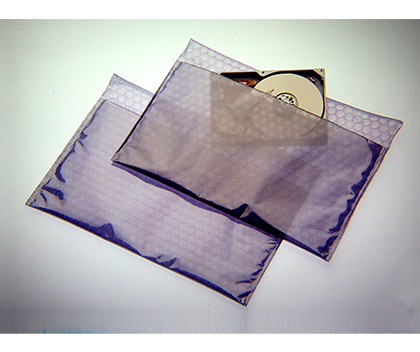Do You Really Need an ESD Magnifier for Cleanroom Operations?
- Ananya Srinivas
- Aug 28
- 4 min read
In today’s fast-paced electronics and semiconductor industries, precision isn’t just important — it’s critical. From assembling microchips to inspecting printed circuit boards (PCBs) and medical devices, even the tiniest defect can lead to massive production losses. But there’s another silent threat that can ruin your hard work — electrostatic discharge (ESD).
If you work in a cleanroom or handle sensitive electronics, chances are you’ve already heard about ESD-safe tools. Among these, one tool stands out for its dual role: the ESD desktop magnifier. It not only enhances your vision but also protects your components from invisible static charges. But the question is — do you really need one? Let’s find out.
What Is an ESD Magnifier and How Does It Work?
An ESD magnifier is a desktop inspection tool specially designed for environments where static control and high-precision work are essential. Unlike ordinary magnifiers, these are manufactured using anti-static materials and grounding systems to ensure that no electrostatic charges build up during operation.
They combine high-quality optical magnification, LED illumination, and ESD-safe technology, making them indispensable for:
Cleanroom inspections
PCB soldering and assembly
Semiconductor wafer alignment
Optical lens adjustments
Microelectronics testing
In cleanroom environments where even a single speck of dust or an ungrounded surface can cause product defects, ESD-safe magnifiers are more than just a tool — they’re a necessity.

Why Cleanroom Operators Rely on ESD-Safe Magnifiers?
Imagine assembling an expensive microchip or inspecting a medical implant worth thousands of dollars, only to have it damaged by a static charge you didn’t even feel. That’s exactly the kind of risk cleanroom operators face when using regular magnifiers.
ESD magnifiers solve this problem in two ways:
They enhance visibility so operators can inspect components with micron-level precision.
They control static discharge, ensuring delicate electronics remain safe from invisible threats.
By combining clear optical performance with electrostatic safety, these magnifiers improve accuracy, reduce defects, and enhance efficiency — all of which are crucial for industries like electronics, aerospace, healthcare, and semiconductor manufacturing.
Key Features That Make ESD Magnifiers Different
Unlike traditional magnifiers, an ESD-safe desktop magnifier is purpose-built for static-controlled environments.
Here’s what sets them apart:
Anti-Static Construction – Built from ESD-safe materials that dissipate static before it reaches your components.
High-Definition Optics – Crystal-clear magnification for inspecting micro-sized parts.
Integrated LED Lighting – Shadow-free, adjustable illumination for accurate inspections.
Grounded Design – Equipped with grounding cords and conductive surfaces to eliminate charge buildup.
Ergonomic Build – Designed for long work sessions without causing eye strain or fatigue.
These features make ESD magnifiers essential tools for any cleanroom workstation where precision and protection go hand in hand.
Applications of ESD Magnifiers in Cleanroom Operations
ESD magnifiers play a critical role across industries where static damage and micron-level precision are major concerns:
Electronics Manufacturing → Inspecting, soldering, and testing PCBs
Semiconductor Fabrication → Aligning wafers and detecting microscopic defects
Medical Device Assembly → Ensuring precision in surgical implants and micro-instruments
Optics and Display Panels → Fine-tuning lenses and LED displays
Aerospace Engineering → Handling sensitive sensors and control modules
Wherever cleanrooms exist, ESD-safe magnifiers are the unsung heroes ensuring both quality and safety.
How to Choose the Right ESD Magnifier?
Not all ESD magnifiers are created equal. To get the most out of your investment, consider:
Magnification Levels → For PCB inspection, 3x to 5x works well; for microelectronics, you may need 7x or higher.
Lighting Needs → Look for integrated LED illumination to reduce eye strain.
Workstation Compatibility → Check size, mounting style, and cleanroom compliance.
Durability → Choose models built with long-lasting, ESD-safe materials.
A properly selected magnifier not only protects your components but also improves operator performance and ensures compliance with ISO cleanroom standards.
Best Practices for Using ESD Magnifiers
To maintain peak performance and safety:
Always verify grounding connections before use.
Clean lenses with ESD-safe lint-free wipes only.
Store magnifiers in static-controlled cabinets when not in use.
Train operators to follow proper cleanroom handling procedures.
By following these practices, you ensure consistent protection and precision for your operations.
Final Thoughts
So, do you really need an ESD magnifier for your cleanroom operations?The answer is yes — if your work involves sensitive electronics, microscopic components, or high-value products, investing in an ESD-safe desktop magnifier is a must.
It’s not just about seeing better — it’s about working smarter, safer, and more accurately.
With Highstar’s ESD magnifiers, you gain a tool that protects your components, improves quality control, and ensures compliance with strict cleanroom standards.
FAQs
Q1: Can I use a regular magnifier in cleanrooms?
No. Regular magnifiers are not ESD-safe and can generate static that damages sensitive components.
Q2: What magnification power should I choose?
For PCB inspection, 3x–5x is standard; for microelectronics, 7x–10x may be necessary.
Q3: Are ESD magnifiers ISO cleanroom compliant?
Yes. High-quality ESD magnifiers are built to meet cleanroom and ESD safety standards.

%20(65).png)



Comments